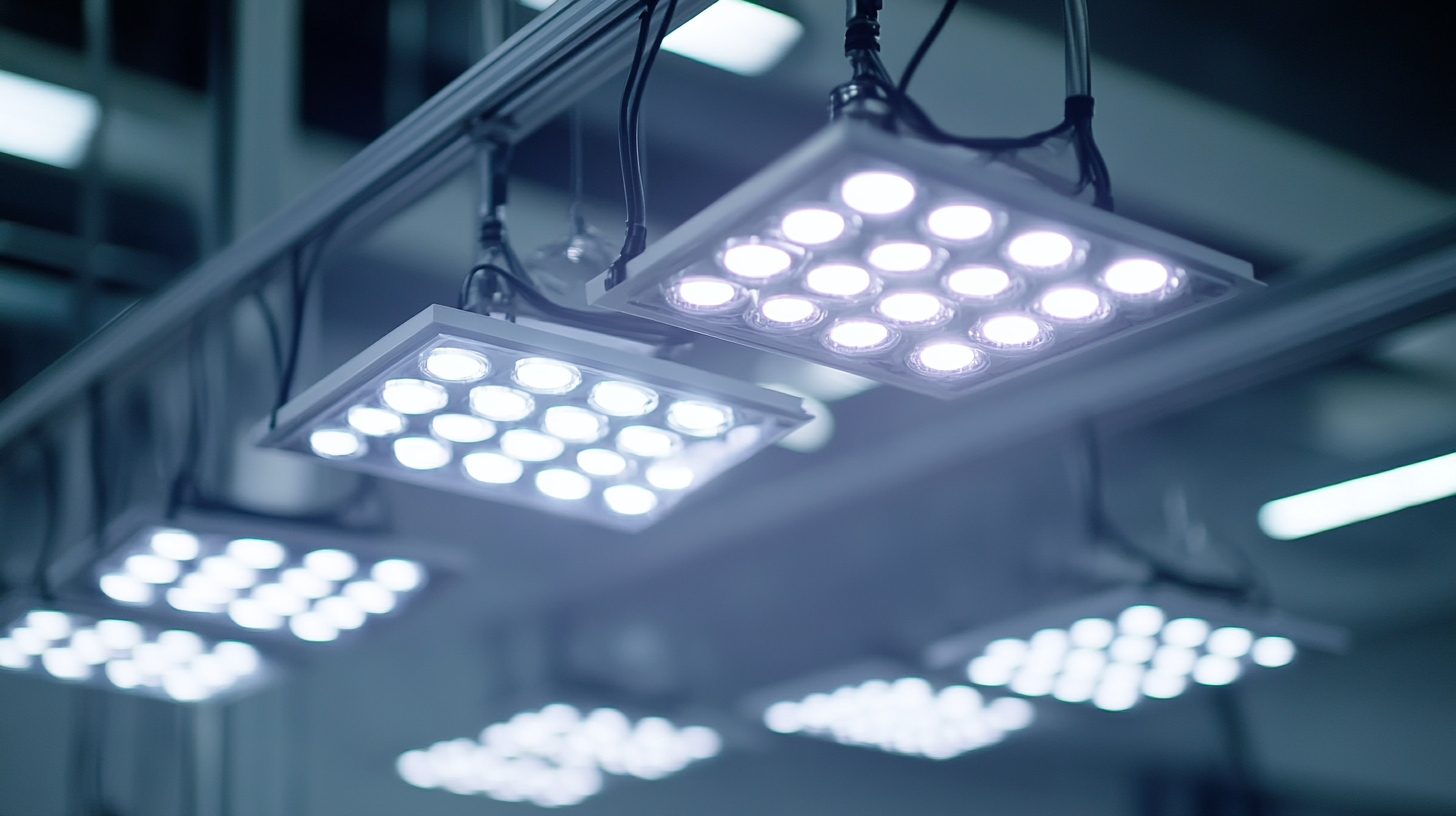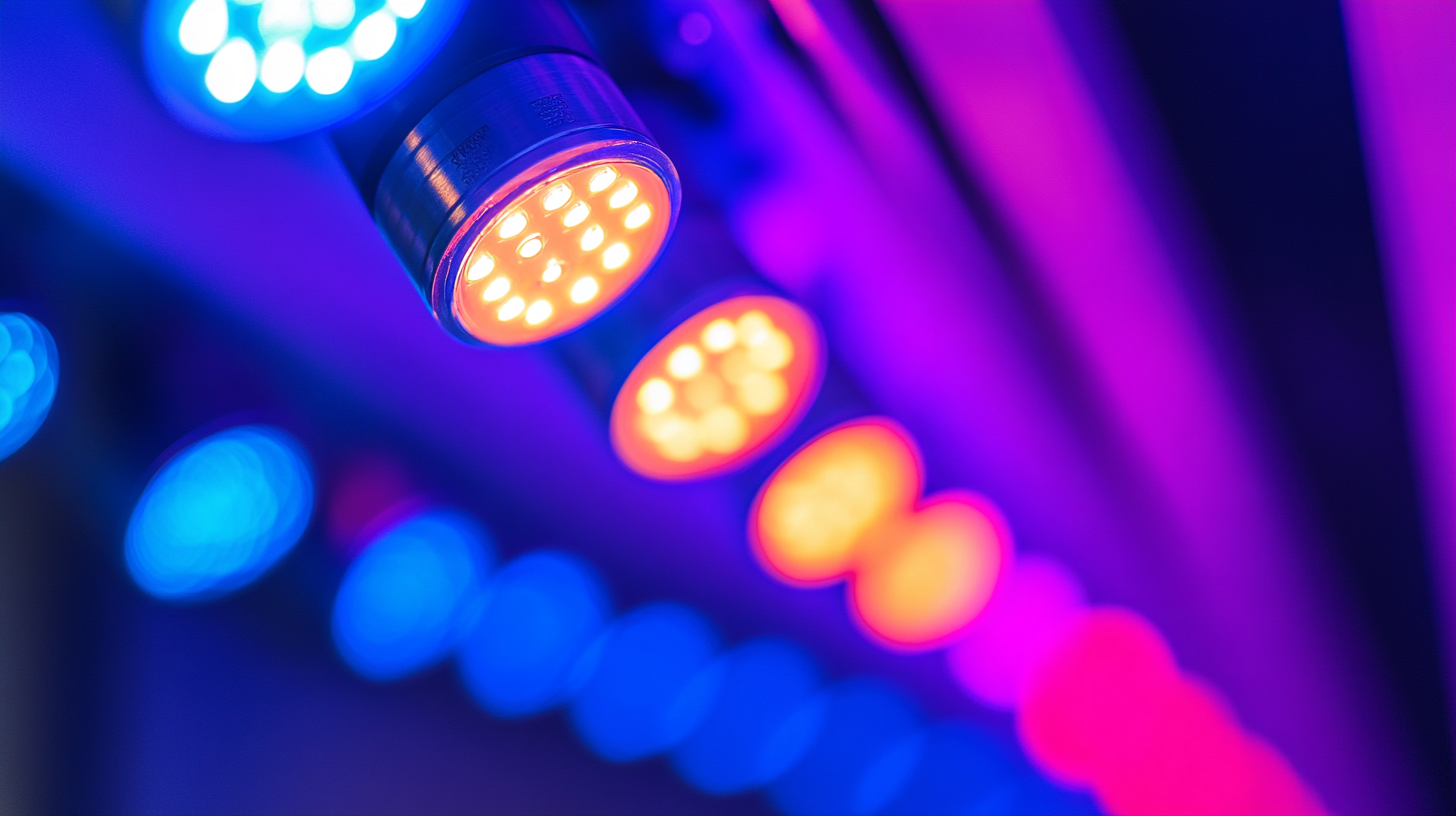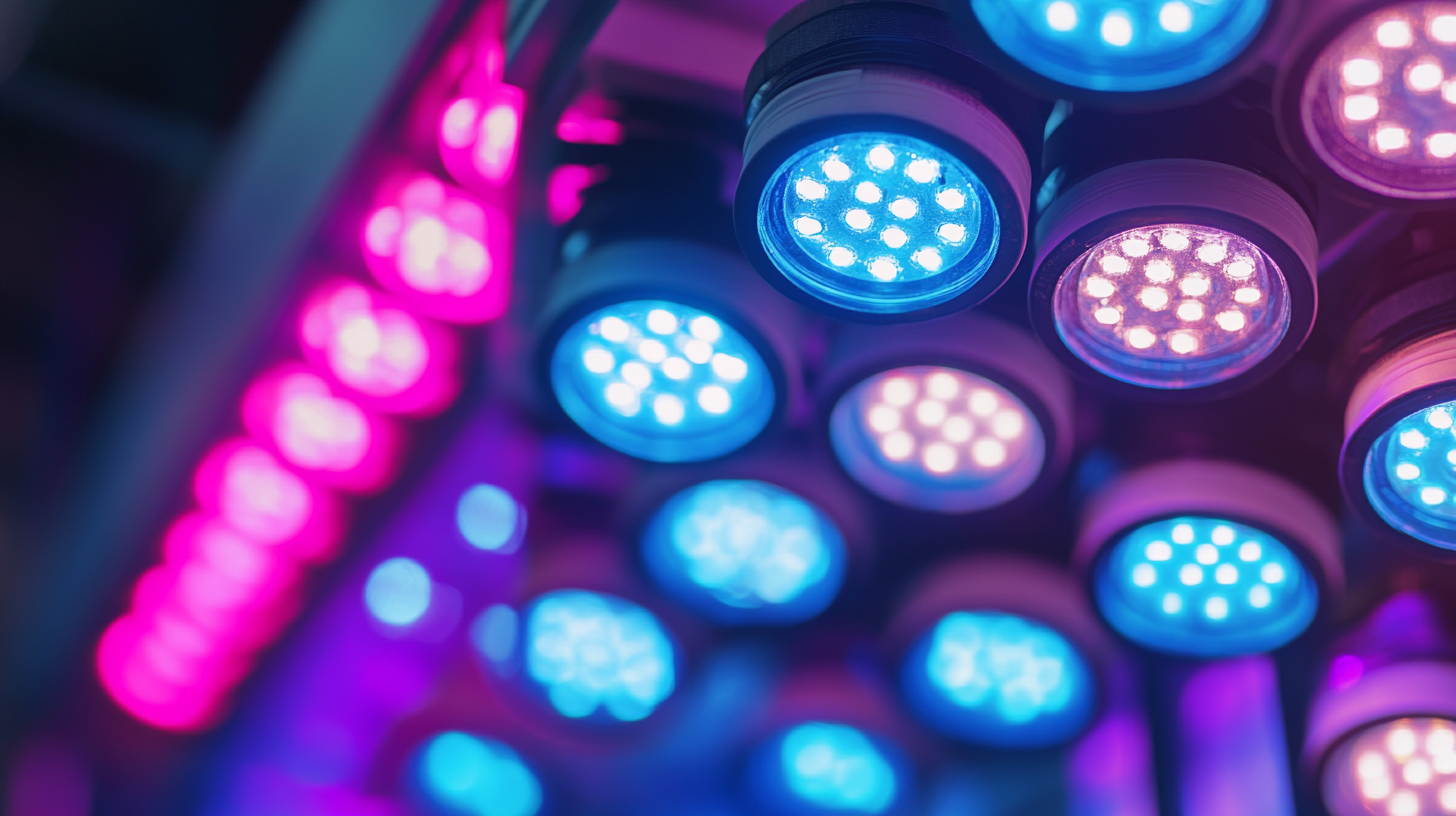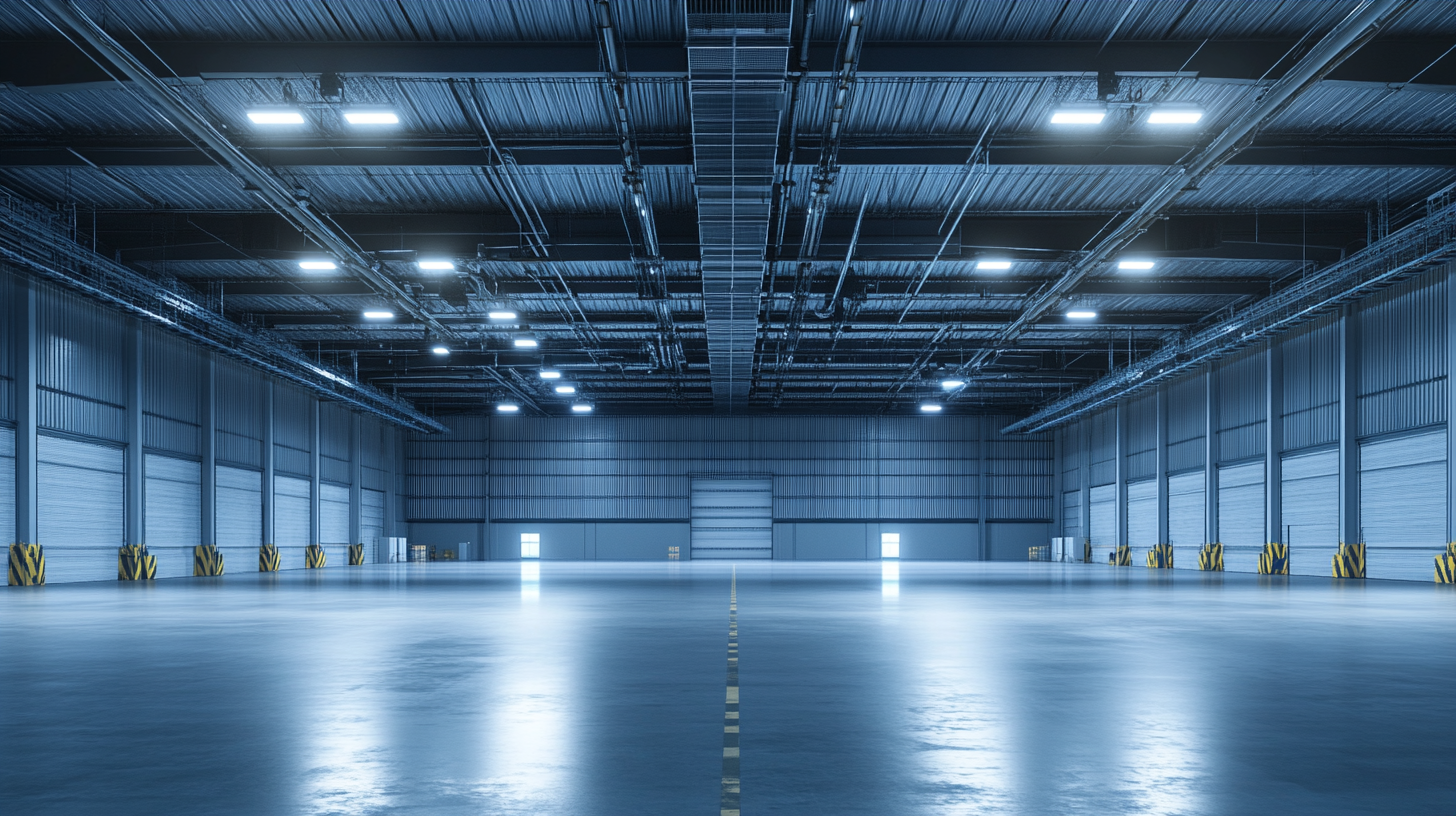
In today's fast-paced manufacturing environment, effective factory lighting has become pivotal in enhancing operational efficiency and worker productivity. According to a report from the International Energy Agency (IEA), approximately 20% of a factory's total energy consumption can be attributed to lighting. As industries strive for sustainability, the transition to energy-efficient lighting solutions, particularly LED technology, has shown promise in significantly reducing energy costs and carbon footprints. The U.S. Department of Energy states that LEDs can last up to 25 times longer than traditional incandescent bulbs, further emphasizing the long-term benefits of investing in advanced lighting systems.
Moreover, proper factory lighting directly impacts worker safety and performance. A study published in the Journal of Occupational and Environmental Medicine highlighted that well-designed lighting can improve focus and reduce the likelihood of accidents on the production floor by as much as 50%. For global buyers seeking to enhance their factory environments, understanding the benefits and best practices associated with LED factory lighting is essential. This blog will delve into these aspects, providing valuable insights into optimizing factory lighting solutions that not only meet regulatory standards but also foster a productive work atmosphere.

In modern factory environments, lighting plays a critical role not just in enhancing visibility but also in improving productivity and safety. LED lighting has emerged as a superior choice for industrial settings due to its numerous benefits. One of the most significant advantages of LED lights is their energy efficiency. Compared to traditional lighting solutions, LEDs consume significantly less energy, which translates into lower electricity bills and a reduced carbon footprint. This energy efficiency is especially crucial for factories, where lighting can account for a substantial portion of overall energy consumption. Additionally, LED lighting offers longer lifespans compared to conventional bulbs. This durability means fewer replacements and lower maintenance costs, allowing factory managers to allocate resources more effectively. Furthermore, LED lights provide improved color rendering and uniform illumination, which can enhance visibility on the production floor. This leads to fewer accidents and errors, promoting a safer working environment. Another vital benefit of LED lighting pertains to adaptability and control. Many LED systems allow for dimming and can be tailored to fit specific tasks, creating optimal lighting conditions for various operations. Such versatility not only supports worker comfort but also aligns with the ergonomic strategies that many factories are adopting to enhance employee satisfaction and productivity. As global buyers explore options for upgrading their factory lighting, the shift to LED technology presents both practical advantages and a strategic investment in the future of industrial operations.

When selecting LED lighting solutions for factory environments, buyers must consider several key factors to optimize performance and energy efficiency. According to a report by the Lighting Research Center, the right LED system can yield energy savings of up to 75% compared to traditional metal halide lamps, making it imperative that decision-makers analyze the energy consumption and overall longevity of the lighting options available.
Additionally, the color temperature of LED lights is essential in enhancing productivity and worker safety. Studies indicate that a color temperature between 4000K and 5000K is ideal for industrial settings, as it mimics natural daylight and improves visual clarity. The IES (Illuminating Engineering Society) emphasizes that appropriate lighting not only ensures compliance with safety regulations but also enhances the overall work environment.
Durability and environmental impact are also crucial considerations. High-quality LED fixtures boast a lifespan of up to 50,000 hours, significantly reducing the need for frequent replacements and maintenance. Furthermore, opting for energy-efficient LED solutions contributes to a factory's sustainability goals. The U.S. Department of Energy projects that increased adoption of LED technology could lead to a reduction of 43 terawatt-hours in electricity use by 2027, translating to substantial cost savings and a lower carbon footprint for manufacturers. By keeping these considerations in mind, global buyers can make informed decisions that align with their operational goals and sustainability efforts.

Implementing LED lighting in industrial settings offers a remarkable opportunity to enhance productivity while significantly reducing energy costs. The first step towards effective implementation is conducting a thorough assessment of the existing lighting infrastructure. By identifying areas that need improvement, such as poorly lit workspaces or areas with excessive energy consumption, companies can tailor their LED lighting solutions to meet specific needs. This evaluation should consider factors like light intensity and color temperature, ensuring a well-lit environment that fosters safety and efficiency.
When selecting LED lights, global buyers should prioritize high-quality products certified by reputable organizations. Durability and energy efficiency are critical factors; options with a longer lifespan reduce replacement frequency and maintenance costs. Furthermore, integrating smart technology can optimize energy consumption by allowing for automated dimming and adjusting based on occupancy. Such systems not only improve light quality but also contribute to sustainability goals, making a compelling case for companies to adopt LED solutions.
Lastly, employee training and engagement play a crucial role in successful implementation. Educating staff about the benefits of LED lighting and involving them in the transition process can foster a culture of sustainability within the workplace. Regular feedback sessions can also help identify any lingering issues, ensuring that the benefits of LED lighting are fully realized in the long run. By embracing these best practices, industries can effectively upgrade their lighting systems, driving both economic and environmental benefits.

In recent years, LED factory lighting has emerged as a crucial component in enhancing cost-effectiveness and energy efficiency in industrial settings. With the global lighting market projected to exceed $83.6 billion by 2024, and LED technologies leading this transformation, it’s clear that adopting LED solutions is not just a trend, but a necessary evolution for manufacturers.
The benefits of LED factory lighting are multifaceted. Firstly, it significantly reduces electricity consumption, which is a major concern for many factories looking to cut operational costs. Studies indicate that LED lighting can decrease energy use by up to 75% compared to traditional lighting solutions. Moreover, the long lifespan of LED fixtures—often exceeding 25,000 hours—means lower maintenance and replacement costs, further enhancing their appeal. The expected growth of the LED lighting market of over 10% annually until 2034 underscores the increasing recognition of these advantages.
Additionally, as the emphasis on sustainability rises, companies are pressured to adopt greener technologies. The shift towards energy-efficient lighting aligns well with regulatory efforts promoting energy conservation and sustainability. Integrating smart lighting solutions can also contribute to this, allowing for innovative control systems that optimize energy use further. In light of these trends, global buyers should consider LED factory lighting not only as a way to reduce expenses but also to join the movement toward a more sustainable and efficient industrial future.
As industries continue to shift towards greater efficiency and sustainability, LED technology stands out as a transformative force in factory lighting. According to a report by MarketsandMarkets, the global LED lighting market is expected to reach $143.3 billion by 2026, growing at a CAGR of 13.4% from 2021. This growth is driven not only by the energy efficiency of LEDs but also by their adaptability to various industrial applications.
One of the most compelling trends in LED technology for factory applications is the increasing integration of intelligent lighting systems. These systems utilize sensors and IoT connectivity to adjust lighting levels based on occupancy and natural light availability, resulting in reduced energy consumption and enhanced worker productivity. A study from the American Council for an Energy-Efficient Economy (ACEEE) indicates that integrating smart controls can result in energy savings of up to 50% compared to traditional lighting systems.
Additionally, advancements in LED technology are enabling better color rendering and high lumen output, which are crucial for tasks that require precision, such as quality control. According to a study published by the Lighting Research Center, LEDs can achieve a color rendering index (CRI) of 90 or above, contributing to improved visual clarity and reducing error rates on the production line. The shift toward tunable white LEDs that allow factories to adjust light color and intensity throughout the day further enhances the working environment, promoting employee well-being.
As we look to the future, the adoption of circadian lighting in factories is gaining traction. This innovative approach adjusts the color temperature of LED lighting throughout the day to align with natural light patterns, potentially improving employee alertness and productivity. The introduction of circadian-aware lighting systems can lead to a significant decrease in fatigue-related incidents, underscoring the critical role that proper lighting plays in modern industrial settings.
Let us help you get started with our superior LED lighting products.
Get all the latest news from BrightLED.
Copyright © Bright LED. All rights reserved.
STAY CONNECTED

